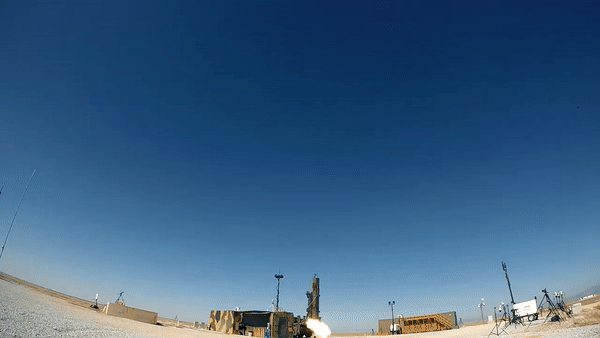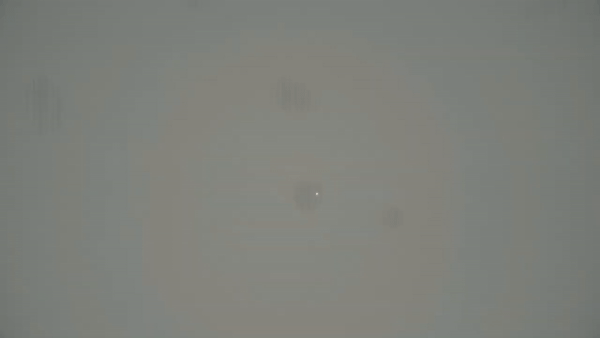The ballistic trajectory in artillery rockets is only used on the basis of range increase, they start to fall freely at very low altitude than ballistic missiles, so they do not even use the low-density atmosphere that allows them to continue accelerating at high speeds like in ballistic missiles, which makes them easier to target because they are always at low altitudes.
For the 3rd time:
we are NOT talking about ICBMS or intermediate-range interceptors.
We are talking about intercepting a Romanian ATACMS or Serbian Sumadiya, which are
tactical BMs, with a range of up to ~500km at best. I'm not even sure SS-26 ("Iskander") are truly ballistic in its terminal phase or it is capable to change trajectory, so I am excluding them for now, but we will see what the Ukrainians will report back.
As can be seen from the video, the iron dome system hits artillery rockets before they enter the free-fall phase or just as they enter, just like Arrow, Thaad.
In other words both artillery rockets and tactical ballistic missiles enter the terminal phase the same way, following the same
ballistic trajectory. Now that we confirmed it, let's move on.
Systems such as PAC 3, David's Sling, Barak, Aster 30 have to hit the target when the target is in the free fall phase, which requires high energy and good maneuverability.
Again, drop the talk about long-range and intercontinental BMs, it's
not the topic here.
What are these "high energy" and "good maneuverability" capabilities you're talking about? Definitions, numbers please.
IRIS-T can do 12gs, tops out around mach 3, the ATACMS is around mach 3-3.5, and the interceptor is
not chasing, it aims ahead of it. There's really no practical difference here (and Serbian etc ones are even slower.)
The Germans want to launch cruise missiles from the MARS system, so now we are going to take the JFS-M to the ballistic missile class ?
What.

FYI cruise missiles are an entirely different class, as they, per definitionem,
do not follow a ballistic trajectory, ergo CMs cannot be called 'ballistic' to begin with...
Long-range systems, whether anti-ballistic or even air-breathing, require a fixed, high-power radar alongside a single rotary radar. Even if you accept that the radar in the battery structure of the iris is well designed, a larger radar is required for detection, as in the MEADS system.
Who said IRIS-T is working on its own?

FYI
every air defense system on the world relies on large surveillance and tracking radars which pass the information to shorter range fire control radars ("cue in".)
FDC radars take care of targeting for fire calculations, tracking etc. And this is a rather short range to cover, the effective range of current medium-range GBAD missiles is around 40km; even the work-in-progress IRIS-T SLX is only promising 80km at best.
My uneducated guess is the launcher radar's instrumented range about 2x of the missile's range, but we can ask
@molnibalage to chime in, he knows these things by heart, I bet.

The NASAMS, IRIS-T or the Israeli GBAD systems all work the same way, the difference is only in the range, how each country splits up the roles between different radar systems. With IRIS-T SL you can integrate almost any radar, like AESA SAAB Giraffes, Hensoldt 4Ds, Thales Ground Masters, you name it.
To hit an incoming ATACMS, SS-21 ("Tocska"), or Sumadiya you just need the tracking info passed down, this part is a given. Then the FDC needs to recognize it - though this could already happen at the previous level - and be able to calculate the trajectory, this is also a no-brainer (sw upgrade.)
Finally the missile needs to hit it at the rendezvous point. Since these
ballistic missiles we are talking about here are all short-range tactical ones, they are essentially nothing more than faster artillery projectiles when entering terminal phase (FYI artillery projectile is where the word
ballistic comes from, FYI.)
In Hungary they have the large, Italian-made (Selex) 500km+ NATO radar installations to provide long-range airspace surveillance. Below that they have old ex-Soviet radars which are being replaced the world's most advanced MMRs from Elta, which will cue in the American-made fire control radars in the NASAMS 3 GBAD systems. (It is basically Norwegian, but the radars are American X-band Sentinels or, if they are smart, they silently upgraded their order to get the newly offered S-band AESA GhostEye MR option; it's brand new, built on the next-gen US radar platform, debuted about a year ago.)
There is really no argument here, these systems are
technically fully capable to track and target any incoming projectile including BMs.
I can't say that everyone in the world who has been doing this job for years and PROVE it is retarded, just to make the Germans look smart.
No, you are unable to accept the fact that the Germans clearly see a market niche and they executed their product plan with their usual, methodical (Teutonic

) way, over a decade.
You also need to let go this rather childish idea of 'any ABM system must be capable of shooting down ICBMs' you seem to have locked on because it isn't the case (never was.)
Since technology allows to implement a LOT of computing power in a very small size, the possibilities are also exploding; this new functionality is one example of this change.
I also suggest that you look up how integrated air defense C2 systems work – this last comment made it clear you do not understand the radar layouts, the topology and their service layers under an integrated umbrella e.g., Airbus Defense's
SAMOC Hungary has already deployed.









